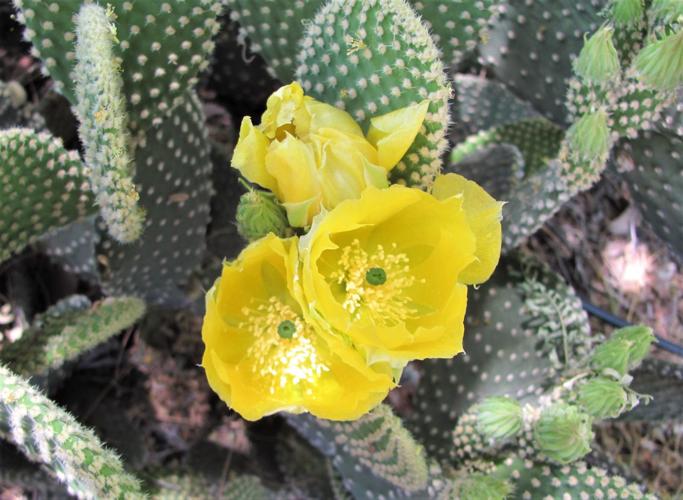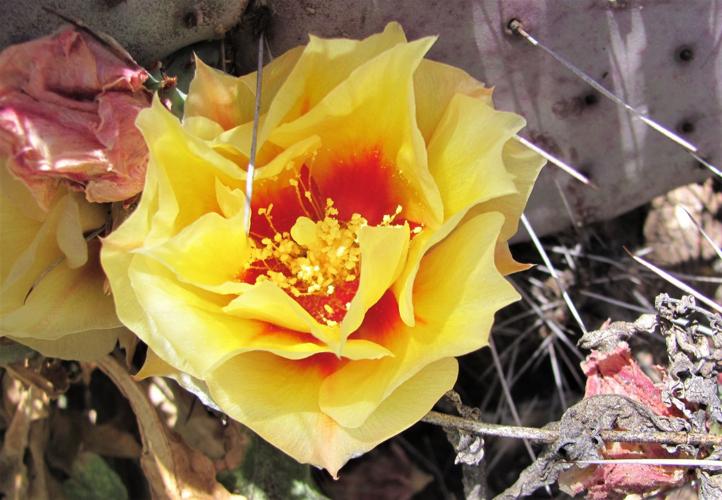Cacti are bursting into bloom around the Tucson valley.
The milky white flowers of saguaros, yellow blooms of prickly pears and other kinds of cactus are arriving just in time to fill a void left by gradually fading wildflowers.
Arizona Daily Star readers have spotted blooming saguaros and other cacti in the Catalina Foothills and elsewhere around Tucson.
It’s also likely that you’ll find cactus flowers in the coming weeks at Saguaro National Park, with units east and west of Tucson, and Tucson Mountain Park west of the city.
SAGUARO BLOOMS 101
Cactus experts, including John Wiens of the Botany Department at the Arizona-Sonora Desert Museum, have provided some intriguing facts about the blooming habits of saguaros.
According to Wiens, “An individual bloom opens somewhere around dusk. It stays until mid-morning the next day, and then that’s it for that one flower,” which wilts by afternoon.
A Saguaro National Park guide notes that “the spectacle repeats itself night after night for about four weeks until as many as 100 flowers have bloomed on each saguaro.”
While saguaros typically bloom at this time of year and for the next couple of months, Wiens and Mark Dimmitt, a retired director of natural history at the Desert Museum, say saguaro blooms have been observed in every month of the year.
Yes, even in December, January and February in a few cases.
Following the normal blooming season, saguaro fruit ripens in June and July. The sugary pulp of each fruit contains as many as 2,000 seeds.
OTHER BLOOMING CACTI
Multiple species of other cacti — from chollas and hedgehogs to prickly pears — bring hues of yellow and red to the desert when they bloom in spring, late spring and summer.
Some reserve their main color show for later in the year. One example is the Arizona barrel cactus, which produces orange-red or yellow flowers in August or September, much later than most cacti.





